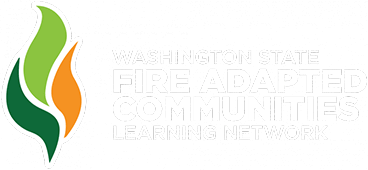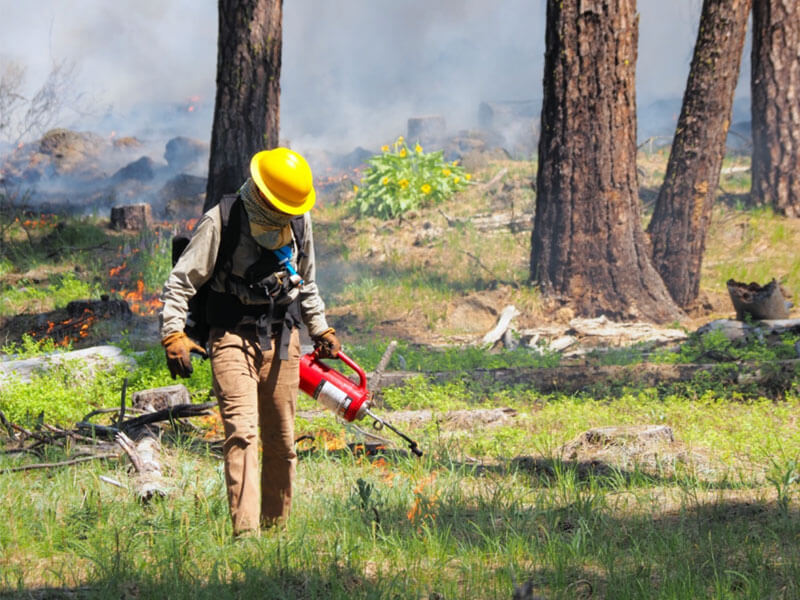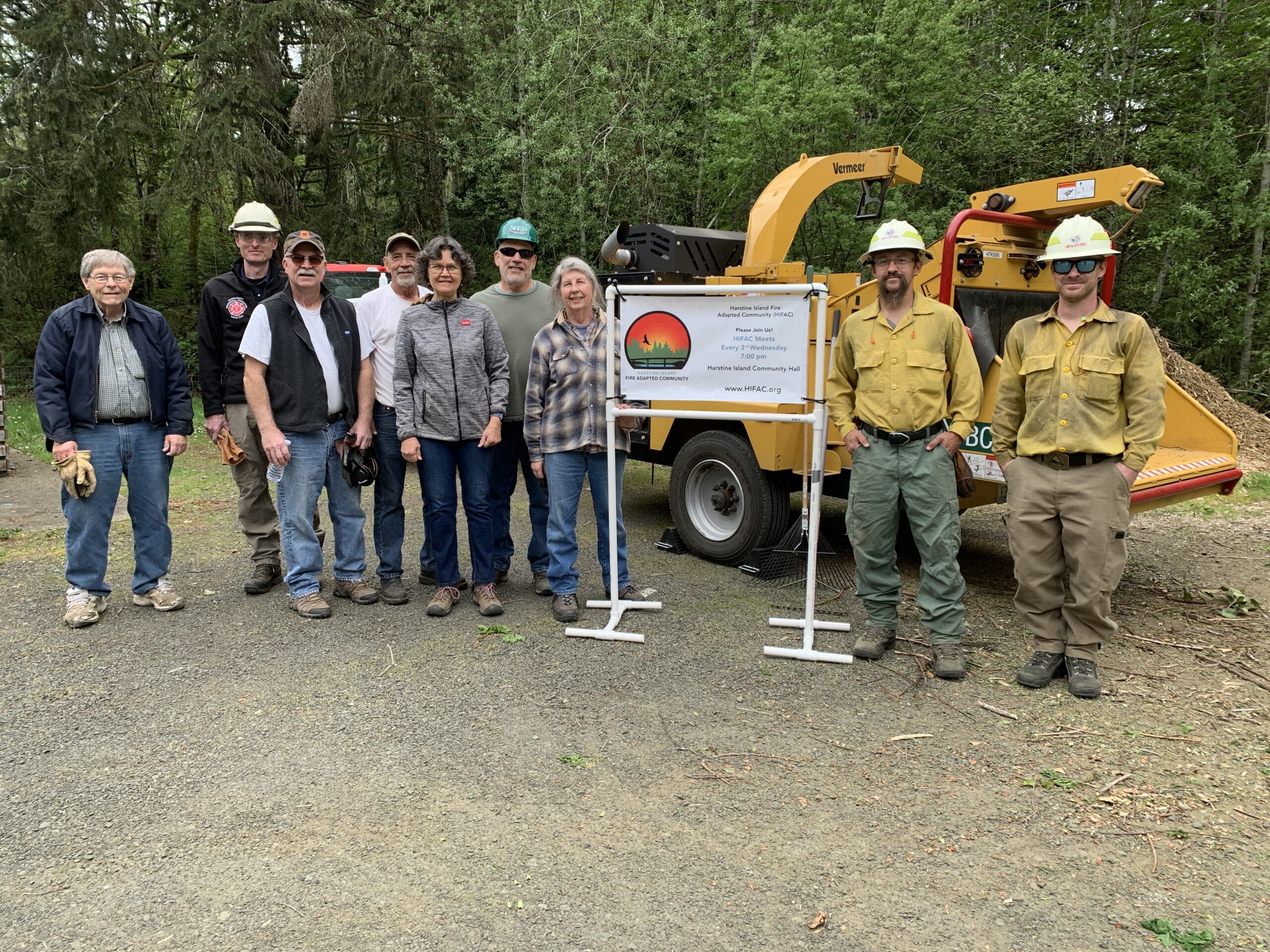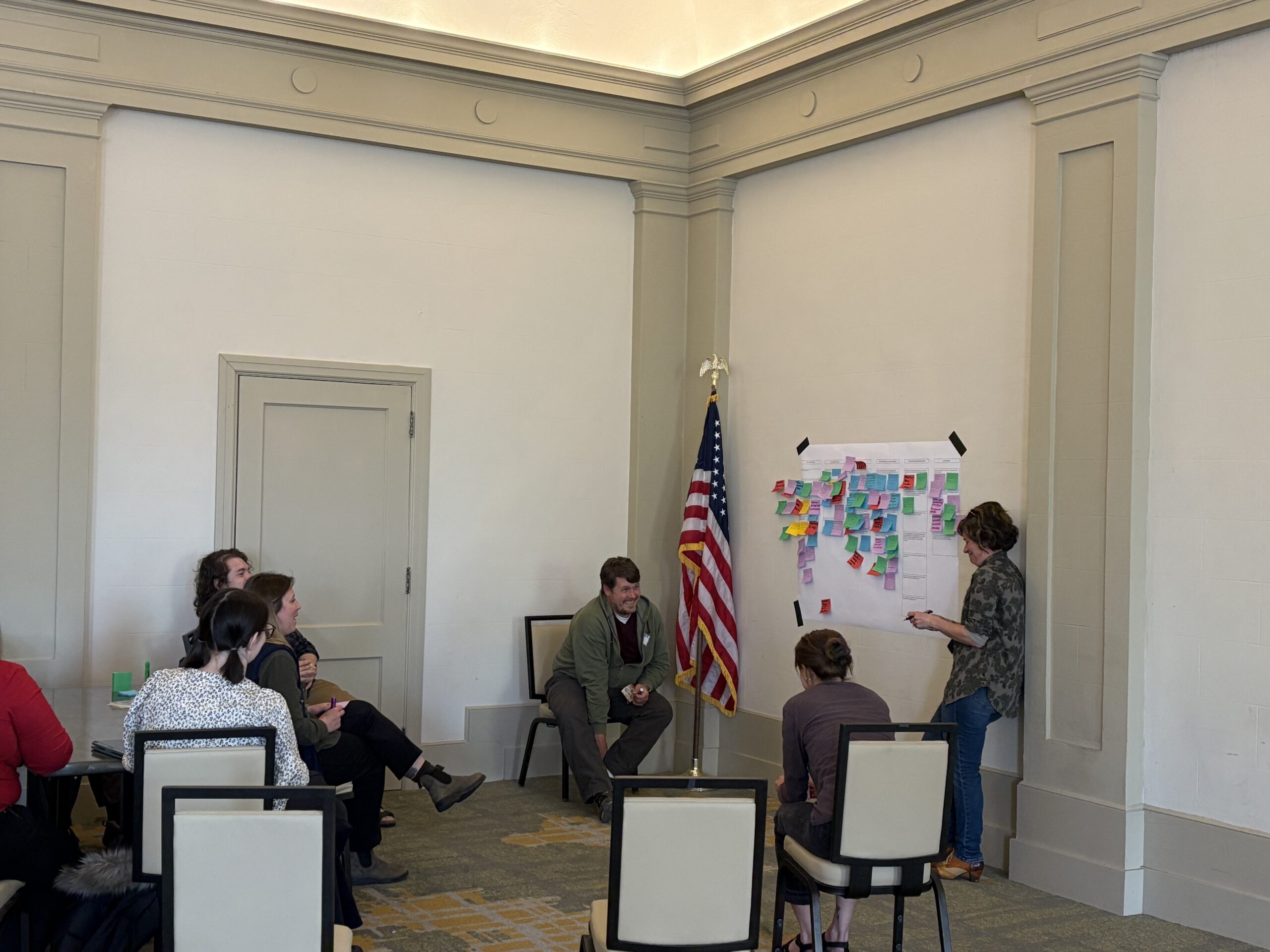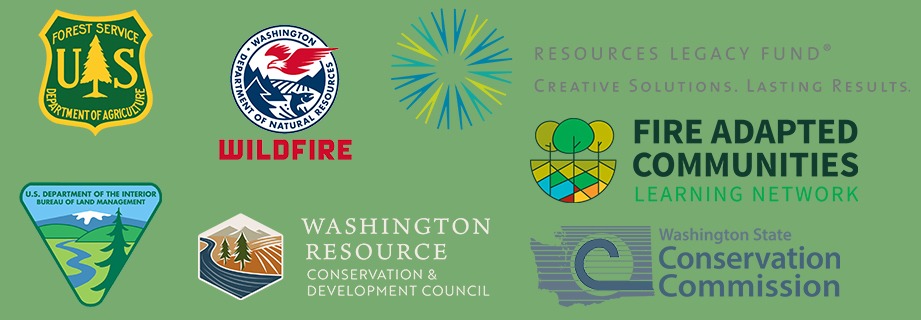We sat down with Sarah Allaben, Fire Adapted Communities Coordinator with Mount Adams Resource Stewards (MARS) to learn about her recent work in developing local community burning programs.
Why does MARS want to do community burning?
Prescribed fire is a key tool to reducing wildfire risk around wildland urban interface (WUI) communities and restoring health to the dry eastside forests in our region, but it’s currently used mainly by federal agencies on public land. MARS recognized that there is a gap in capacity, knowledge, and experience needed to implement burns on private lands.
We also recognized that there are a lot of barriers to generating that capacity and experience because so much of the prescribed fire world is centered around National Wildfire Coordinating Group (NWCG) standards, as well as the culture and complexities of the Forest Service and other federal agencies.
As a private non-profit increasingly using prescribed fire on our own Mt. Adams Community Forest lands, we are in a good position to help make prescribed fire more accessible to community members and other non-agency land managers. With our community burning efforts, we hope to flip the culture of agency fire burning, which tends to be more hierarchical and top-down, and instead try to make prescribed fire grassroots and collaborative, building up private landowners with the equipment, skills, and training they nee
What are some of the benefits and challenges you have experienced with building community burning programs?
Collaborative burning can give people the tools and assistance needed to safely use prescribed fire to reduce fuels and provide wildfire protection for our rural communities. As an added benefit, it’s really fun! At our recent “Learn & Burn” workshop, it was cool to see people experiencing prescribed fire for the first time, seeing their first tree torch (and realizing that’s not always a bad thing), watching the fire behavior, testing what happens when they use the drip torch in a particular way, or analyzing how plant species reacted to the burn. Making prescribed fire more accessible and community-based helps connect people to their land and understand its relationship with fire.
There are a lot of challenges! First, there are not a lot of approachable trainings and platforms for non-agency people to learn about and gain experience with prescribed fire. The NWCG system makes it difficult for the average person to access the classes and qualifications needed to develop prescribed fire skills. Most low-level NWCG classes are also very suppression focused, so even for many firefighters there is a lack of high-quality prescribed fire training.
There are also public perceptions of prescribed fire that can stand in the way of progress. There’s a lot of fear, particularly about liability for non-profit organizations and private landowners. There is often confusion around who is liable and what kind of risks people face if a fire were to escape or burn down a structure.
The broader public perception is a challenge too, particularly after the past couple of years – the fact that most prescribed fires go to plan gets obscured by a few big events that get a lot of press (where the fire didn’t go as planned). People tend to see the risk of prescribed fire more clearly than they see the risk of not doing prescribed fire, which I think is much greater.
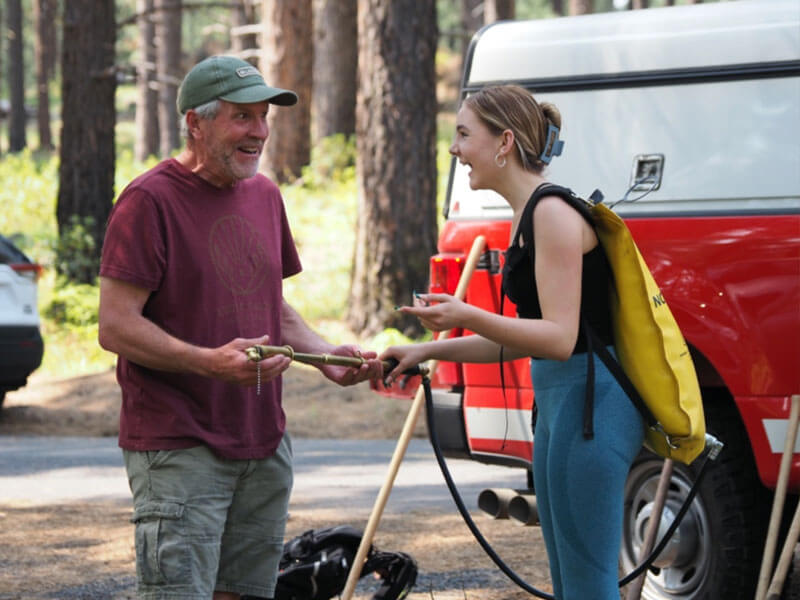
What are your biggest accomplishments so far for your community burning program?
The South Mt. Adams Prescribed Burn Association (PBA) had its kick-off event in May, a “Learn & Burn” workshop which I think was a great success. We hosted about 30 participants over three days, as well as 12 highschoolers who came for some of the hands-on sessions – they were totally into it! We had partners from the Department of Natural Resources (DNR), Washington Resource Conservation & Development Council (WRCD), and The Nature Conservancy (TNC) helping teach and mentor participants. The participants themselves were quite diverse and included representatives from six or seven different non-profits, some local private landowners, and business owners.
We held classroom sessions covering topics like burn plan writing, smoke management, and fire weather, along with field skills sessions about hand tools, firing patterns, and engines. We culminated it with a burn day where we burned about 25 acres on our community forest. People thought that was a useful way to cement the classroom learning and actually see prescribed fire in practice.
In addition to hosting the Learn & Burn, MARS has been steadily establishing an equipment cache of personal protective equipment, hand tools, drip torches, hoses, etc. for use on PBA burns to help overcome the barrier of equipment costs/inaccessibility.
Moving forward, we’re planning to hold our first two-week prescribed fire training exchange (TREX) in the fall. We decided to make our Columbia Gorge TREX open to applicants who don’t have basic NWCG Firefighter II qualifications, which most TREX events do require. We decided to waive that requirement to mesh with our efforts in developing the South Mt. Adams PBA and expanding private land burning, because we want private landowners and others who aren’t fire professionals to be able to access this training as well. Applications for the TREX are now open and we’re getting a lot of interest so far, including some private landowners who aren’t firefighters but just want to gain prescribed fire skills. We are hoping this will be a way to bring more prescribed fire capacity to our area.
What is MARS’ vision for community burning?
I would love to see a really robust South Mt. Adams PBA that is almost self-sustaining. MARS will help host and support the PBA, hopefully through a future full-time coordinator position, but I’d love to see it running from the motivation and excitement of the landowners and community members who are a part of it.
In March, several new PBA leaders in Washington went down to California to visit with and have a learning exchange with PBA leaders there. It was exciting to learn about the progress of these PBAs in engaging their communities, burning acres, and hosting innovative trainings. Even if folks don’t have their own property to burn, many are still interested in coming to these PBAs to burn and volunteer for fun. I think our PBA has a lot of potential to get to that point if we can, through public education, get people more comfortable and excited about burning.
Hopefully we will be hosting more TREX events in the future after the inaugural event in the fall. In addition, MARS is always working to acquire more land for the community forest; we are continuing to build our own internal prescribed fire capacity and fit prescribed burning into our management strategy for our community forest as it grows.
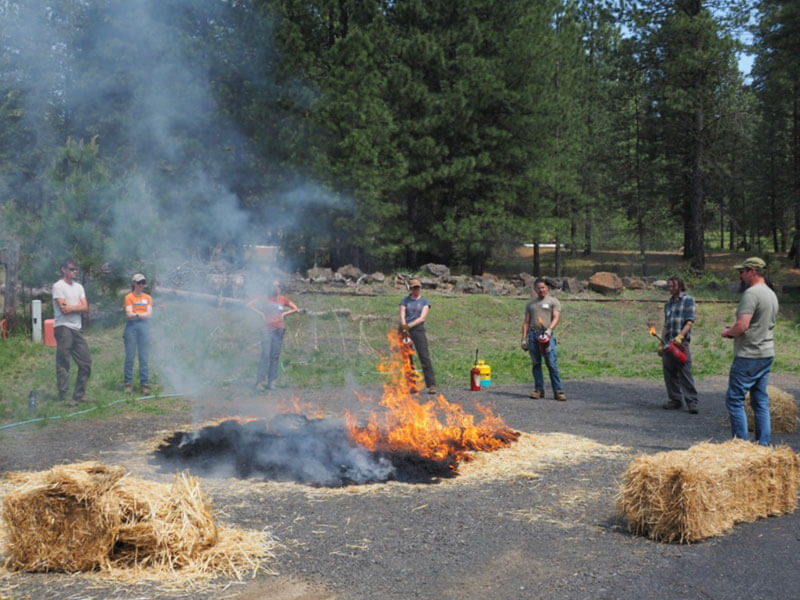
How did others inform your process of creating a community burn program and what would you teach others who are starting their own community burn programs?
A lot of what we have been doing so far in developing the South Mt. Adams PBA has been informed by the week-long learning exchange trip in California arranged by WRCD. Some major takeaways from that were:
- PBAs can be structured in so many different ways; they need to reflect and fit the community they are in. Some PBAs have membership dues, boards, and monthly meetings, whereas others are just a mailing list of private landowners who casually get together to burn. That’s been a focus of our PBA planning meetings – how can we best serve this community and what fits the best with this particular region?
- PBAs eventually need a full-time coordinator. It’s difficult to manage this work without having someone dedicated to it. That’s something we are trying to budget and plan for the future.
- How to talk to landowners about liability, and how to frame it more as “risk management”. Communicating that there’s always going to be risk, but we can bring in leadership, knowledge, experience, and resources to manage that risk and make it as safe as possible.
- Burn! You can’t spend all your time doing outreach and planning – people want to burn and that’s what is going to bring them in. Even just having an actual burn day during our Learn & Burn for people to get out there and experience fire was so essential. We’re going to keep building on that momentum and providing other kinds of experiences (e.g., community demonstration burns or pile-building workshops this fall/winter) where people can actually get out in the field and see fire.
It’s hard to offer advice yet because we are still in the beginning stages ourselves! The bulk of my time is spent learning. Huge thanks to folks like Kara Karboski from WRCD, Sami Schinnell from TNC, and Kate Williams from DNR to help mentor me through the TREX planning process! MARS continues to learn and grow in burning our community forest lands as well, and would be happy to chat with others interested in our experience with prescribed fire insurance, navigating the burn permitting and planning processes, DNR’s new Certified Prescribed Burn Manager program, etc.
Our sincere thanks to Sarah for her insights into community burning and PBAs! To learn more about MARS visit their website at mtadamsstewards.org.
